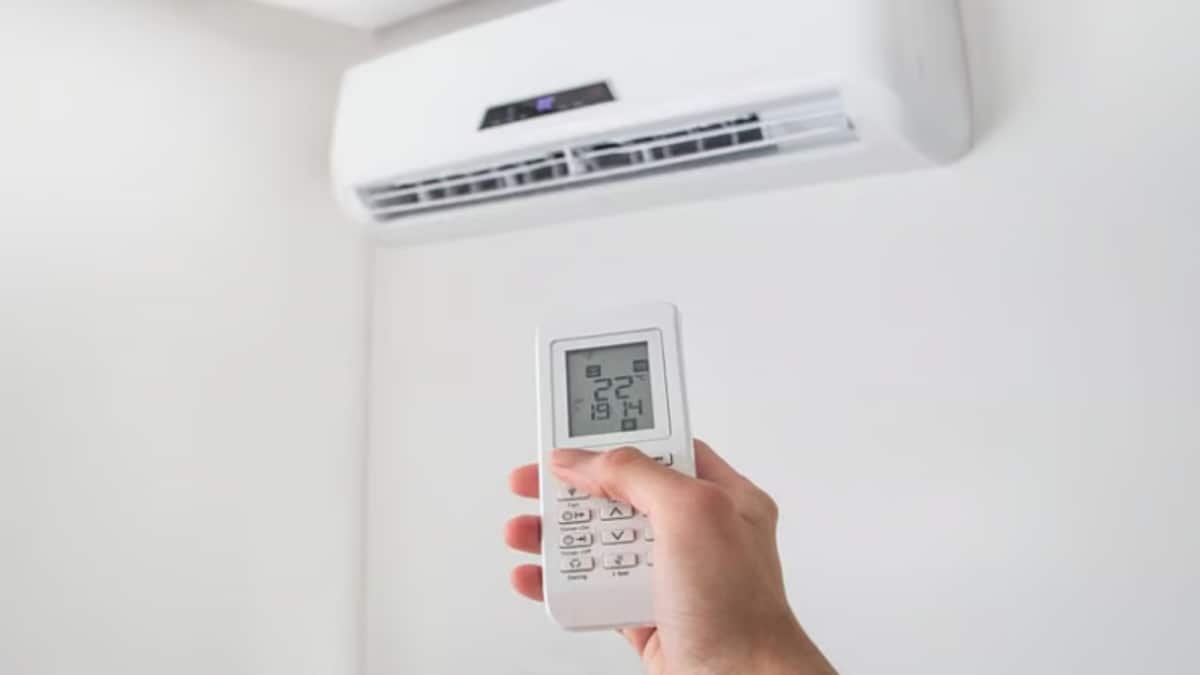Last Updated:June 12, 2025, 14:56 IST
The air-conditioning industry, including Voltas, LG, Blue Star, and Haier, will comply with new government temperature standards (20-28°C) within months.
The government has proposed new rules limiting AC temperatures to reduce energy consumption and emissions.
The air-conditioning industry is set to comply with the new temperature standardisation announced by the government within a couple of months, including resetting its inventory, without passing any additional costs to consumers, according to a PTI report.
Leading room air conditioner (RAC) manufacturers like Voltas, LG Electronics, Blue Star, and Haier have embraced this move. They believe it will promote sustainable growth by saving energy, optimising energy consumption, reducing grid load during peak summers, and extending the lifespan of the units.
On Tuesday, Power Minister Manohar Lal Khattar mentioned that the government is developing a framework to standardise the default temperatures of air conditioners, including those in automobiles, within the range of 20 to 28 degrees Celsius.
The industry will need to make minor modifications to the designs and settings of the remote control and its firmware (software embedded into hardware devices) for implementation, which could take up to six months.
Voltas MD Designate Mukundan Menon welcomed the decision to standardise the operating temperature range of Room Air Conditioners (RACs) between 20 to 28 degrees Celsius, considering it a step towards smarter, sustainable cooling. “This aligns with India’s broader energy efficiency goals and the Bureau of Energy Efficiency’s (BEE) commitment to promoting responsible energy use,” he said.
However, implementing these changes will require manufacturers to reprogram devices or deploy software to comply with the revised temperature settings. PTI reported that the government has indicated that compliance will be monitored, though specific enforcement timelines have not yet been announced. Menon added that Voltas is ready to support this transition and remains committed to delivering efficient cooling solutions to Indian households.
Blue Star Managing Director B Thiagarajan noted that the issue of over-cooling had been under discussion for a long time. He mentioned that the industry is comfortable implementing the changes, which primarily involve altering the remote firmware and managing inventory by a cut-off date. “It’s a simple job. So, there is no problem,” he said, adding that a lower temperature does not necessarily make a human being comfortable, as it also depends on air circulation and humidity control.
Haier Appliances India President NS Satish highlighted the economic and environmental benefits of this move, stating that lower power consumption means reduced carbon footprint and electricity savings for consumers, leading to extra money in their pockets.
With over 10 crore ACs in use and an additional 1.5 crore added annually, it is crucial to take decisive action to curb excessive energy consumption, especially during India’s scorching summer months, Satish said.
Voltas MD & CEO Pradeep Bakshi described the initiative as a win-win situation for the public, the government, and the nation. When asked about the time frame for implementing the changes, he said it could be achieved within the next two to three months. “We have stocks and raw materials. So, now we will have to change the design a little bit and convert. So, in a couple of months, they will be able to achieve,” he said, noting that this does not require any additional cost.
An LG Electronics India Spokesperson called this a “progressive step” that places India among a select group of nations committed to responsible energy use. “The regulation brings a threefold benefit — enhancing product longevity and performance, promoting environmental sustainability through improved energy efficiency, and supporting the health and well-being of consumers by encouraging optimal temperature settings. We believe this move will drive greater awareness and adoption of energy-conscious practices among users,” the spokesperson said.
The Indian room air conditioner market is one of the fastest-growing markets globally, with over 12 to 15 companies competing. The market is estimated to be around 15 million units.
(With PTI Inputs)
A team of writers and reporters decodes vast terms of personal finance and making money matters simpler for you. From latest initial public offerings (IPOs) in the market to best investment options, we cover al…Read More
A team of writers and reporters decodes vast terms of personal finance and making money matters simpler for you. From latest initial public offerings (IPOs) in the market to best investment options, we cover al… Read More
- First Published:
#Temperature #Rule #Settings #Changed #Manufacturers #Give #Roll #Timeline



